There’s nothing like rising steam from a hot biscuit, crispy‑golden on the outside, soft and flaky inside. This recipe shows you not just what to do, but why. We’ll talk about how cold fat, folding, and flour types all work together so your biscuits rise tall and pull apart in buttery layers.
Pair these homemade biscuits with Honey Butter or some Hot Honey!

Why My Recipe
- Build layers with cold fat + folding technique to get flaky, pull‑apart biscuits.
- Six staple ingredients with flexible options (butter, shortening, or lard; milk or buttermilk) so you bake what you have.
- Make‑ahead & storage tips so you can prep or freeze and still get fresh‑baked texture.
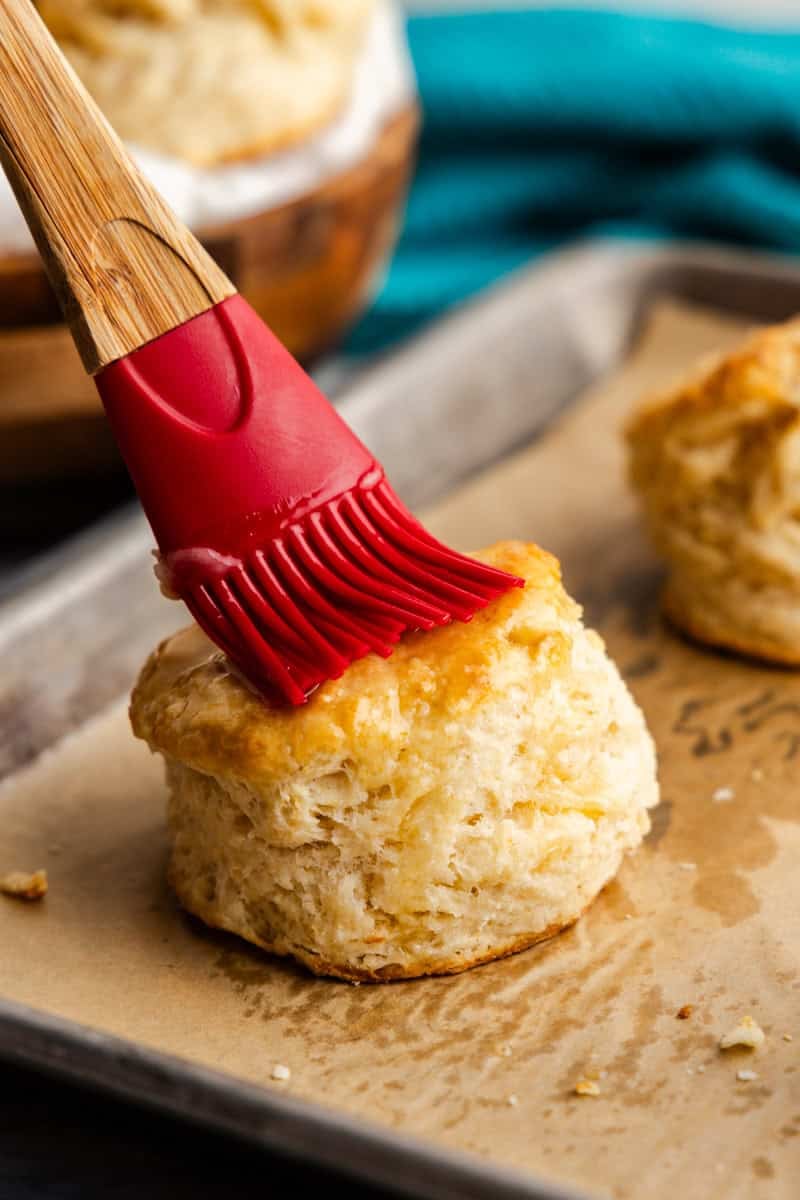
Nothing beats warm, flaky old-fashioned biscuits straight from the oven. Comfort food of comfort foods! We love our biscuits tall and flaky around here. The kind you can easily pull apart and fill with butter right in the middle so it melts into the layers. Whether you want a classic plain biscuit or a savory twist (add garlic, herbs, or cheese), this version is flexible. And if you’re busy, you’ll appreciate that you can prep ahead, freeze, or reheat without losing the fresh-factor you love.
Ingredient Notes
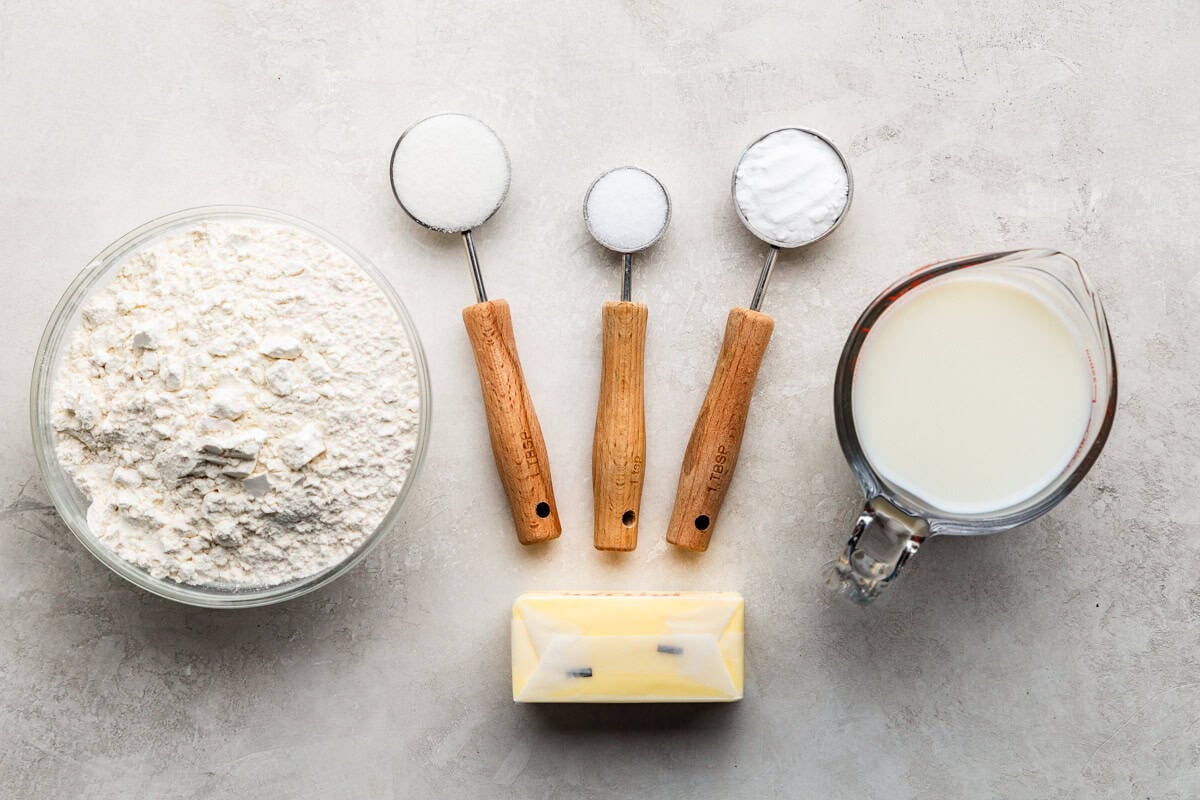
- All‑Purpose Flour (or Flour Blend): Use good quality AP flour (10‑11% protein). For super tender crumb, try blending half cake flour + half AP. Bleached or unbleached both work.
- Baking Powder (and Optional Baking Soda): Depends on whether you use buttermilk (acidic) or milk. If using buttermilk, a little baking soda helps balance pH and improve browning.
- Fat (Butter, Shortening, Lard): Keep fat very cold. Butter gives flavor; shortening gives higher melting point and more lift; lard gives classic texture. For coconut oil: freeze solid, but expect some coconut flavor and softer edges.
- Liquid (Milk or Buttermilk): Buttermilk adds tang and tenderizing effect; milk keeps flavor milder. Cold liquid helps keep fat from melting prematurely.
- Sugar & Salt: A small amount of sugar enhances browning; salt should be table salt.
- Optional Add‑Ins: Herbs (rosemary, thyme), garlic, cheese, or use egg wash / butter wash for a golden top.
Laminating the Dough
One of the best ways to guarantee tall, flaky layers in your biscuits is to laminate the dough. Laminating may sound fancy, but it’s just a simple folding technique you can do right on your countertop.
After your dough comes together, gently press it into a rectangle, then fold it into thirds like a letter. Turn the dough 90 degrees and repeat this folding process two more times.
This builds distinct layers of dough and cold fat, which puff up in the oven and create that pull-apart texture we all love. You don’t need to roll it out with a pin. Your hands work perfectly here. Just remember to work quickly to keep the dough cold and handle it as little as possible to keep those layers tender.
Tips for Best Texture
- Handle dough as little as possible. Overmix = tough.
- Keep everything cold (fat, liquid, tools). If dough warms, chill before baking.
- Use larger cutter = more height, smaller = more pieces. Adjust bake time accordingly.
- Use an instant read thermometer if possible: interior ~190°F (88‑90°C) when done (varies with size).
Methods for Biscuit Making
Homemade biscuits require you to cut fat (like butter or shortening) into a flour mixture until it resembles coarse sand, and there are multiple ways to do this!
GRATER: The easiest way to cut fat into flour is to grate it using a cheese grater. This works particularly well for cold butter.
PASTRY CUTTER: A traditional, old-fashioned way to cut fat into flour is to use a pastry cutter. This specialized kitchen tool has 3 to 4 curved blades attached to a handle so that you can cut the fat into the flour using a rocking motion.
FOOD PROCESSOR: A food processor is a great modern small kitchen appliance that makes it really easy to cut fat into flour. Simply place your flour mixture into the bowl of the food processor along with your cold fat. Using the S-blade, pulse the mixture together until it resembles coarse meal or sand.
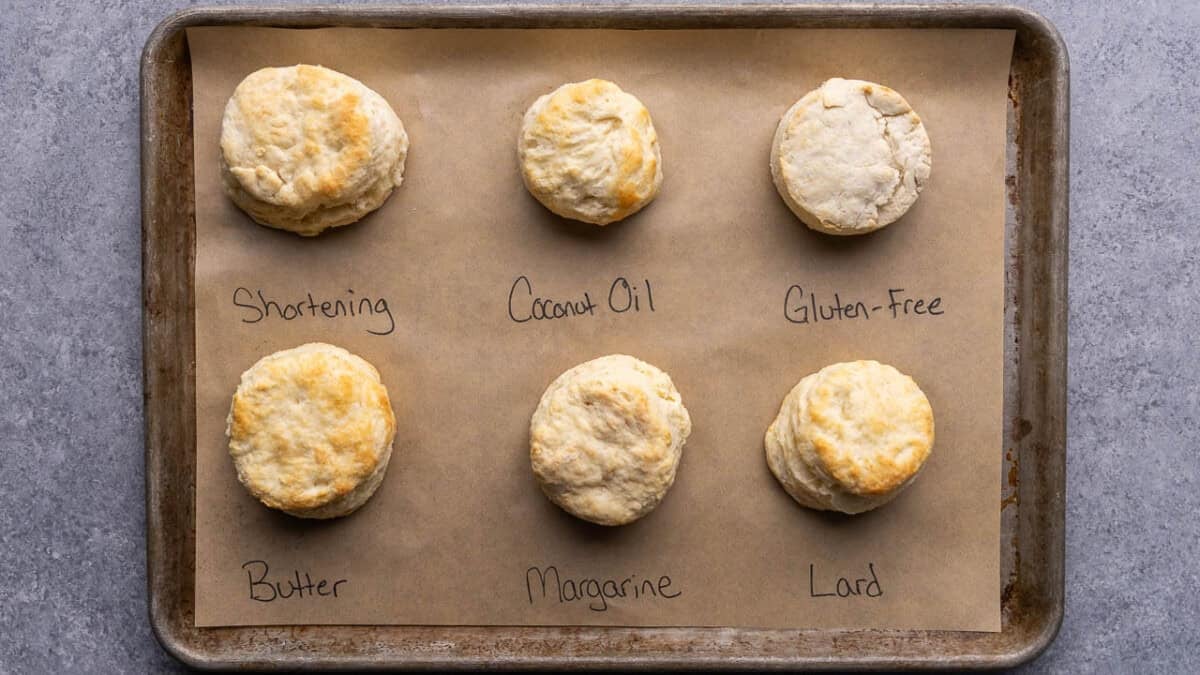
Best Fats for Biscuits
LARD: If you want to make these the way our not-so-distant ancestors did, use lard. Lard is very similar to shortening, but usually comes from pig fat. It has a distinctive flavor that many enjoy.
SHORTENING: For the tallest biscuits, use shortening because it has a higher melting point. As they bake, the flour and shortening are forced apart until the shortening melts. By this point, the biscuit will be set, creating that highly sought-after flaky texture. For the best flavor, use butter-flavored shortening, as regular shortening often lacks a little bit in the flavor department.
BUTTER: Butter provides a great flavor for your biscuit recipe, but has a lower melting point than shortening. Because butter contains somewhere around 15% water, you’ll notice some shrinkage as the water evaporates during baking, resulting in a shorter biscuit.
COCONUT OIL: A popular trend in baking today is to use coconut oil. Coconut oil can be used to make flaky biscuits, but you’ll want to measure and freeze the coconut oil first. Because coconut oil has such a low melting point, it’s best to make smaller biscuits so that the baking process happens faster and more evenly, forcing apart the fat and flour as quickly as possible.
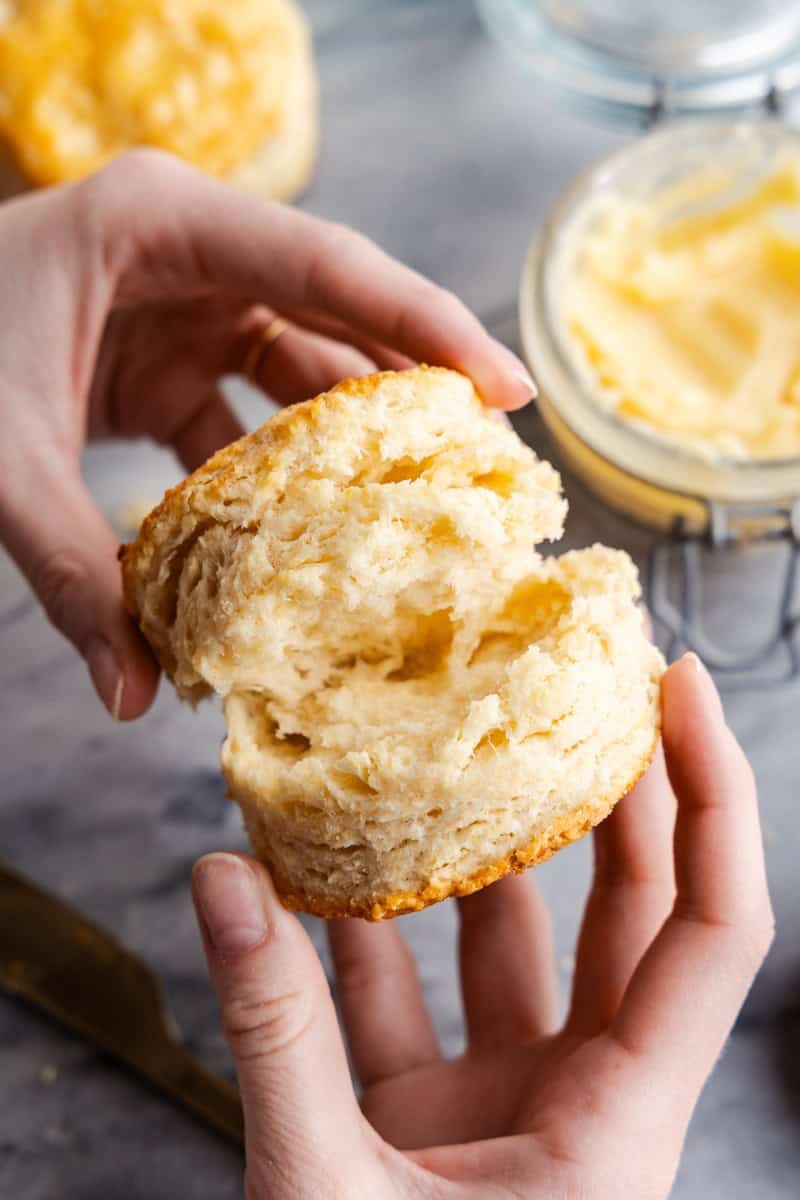
Variations
Once you’ve mastered the base recipe, it’s easy to switch things up and make these biscuits your own.
For a savory version, try adding a teaspoon of garlic powder and a tablespoon of chopped fresh herbs like rosemary or thyme. These flavors go really well with soups, stews, or even a classic roast chicken dinner.
If you’re a cheese lover, fold in about 3/4 cup of shredded sharp cheddar cheese right before shaping the biscuits. You’ll get melty pockets of cheese in every bite.
For something on the sweeter side, you can increase the sugar slightly and serve your biscuits with raspberry butter, honey butter, or a drizzle of hot honey. Whether you keep them simple or dress them up, this recipe is endlessly adaptable.
Make-Ahead & Freezing
This biscuit dough is perfect for making ahead. After cutting out your biscuits, place them on a parchment-lined baking sheet and freeze until solid.
Once frozen, transfer them to a freezer-safe bag or container. They’ll keep well for up to 3 months.
When you’re ready to bake, there’s no need to thaw. Just place the frozen biscuits directly on a baking sheet and bake as directed, adding a couple of extra minutes to the baking time.
You can also freeze baked biscuits. Let them cool completely, then store in an airtight container or freezer bag. To reheat, place them in a 350°F oven for about 10 minutes, or until warmed through. This makes it easy to have fresh, flaky biscuits any time you want without any last-minute prep.
Storage & Reheating
Store at room temperature in an airtight container for up to 2 days, or in the refrigerator for up to 5 days.
Reheat in the microwave for 10–15 seconds.
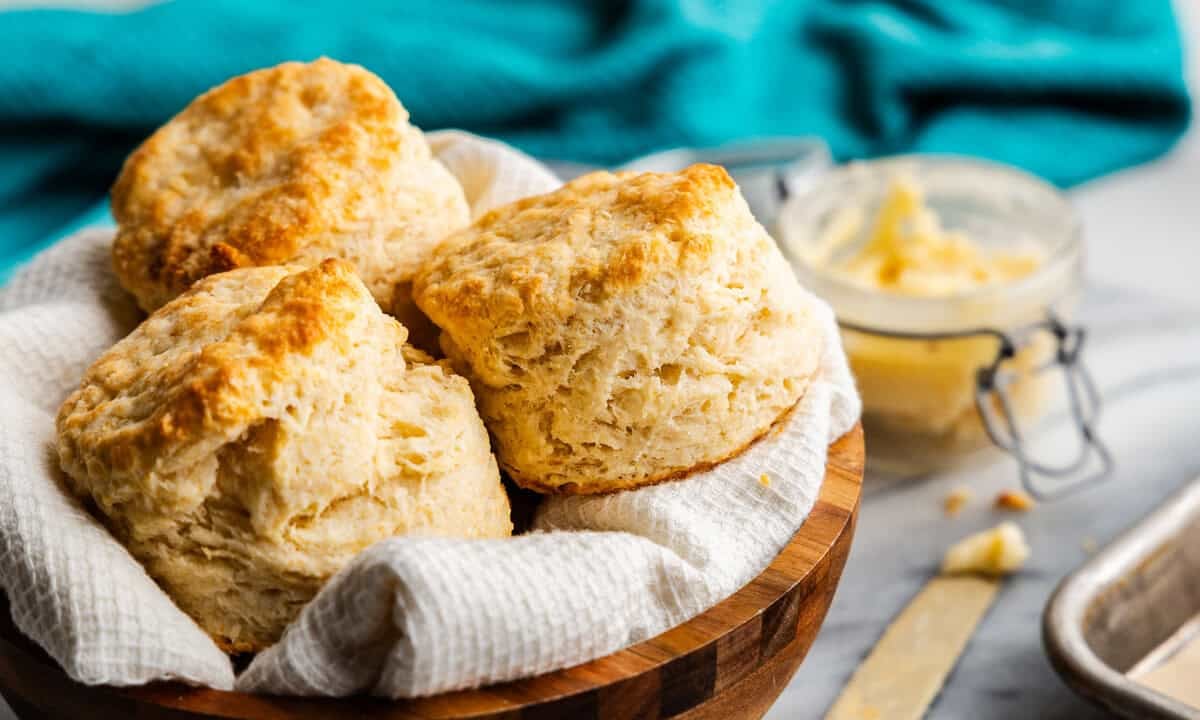
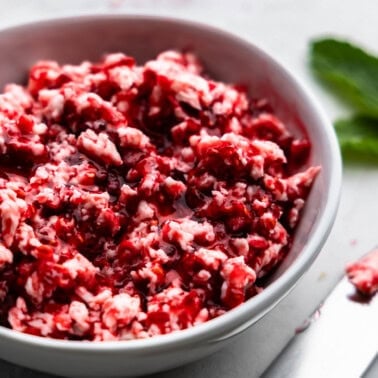
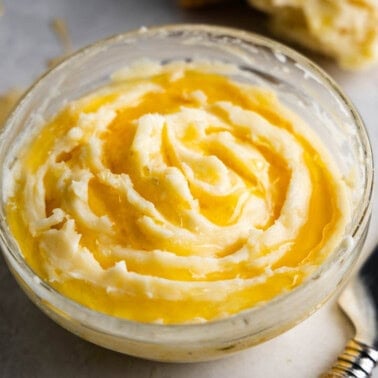
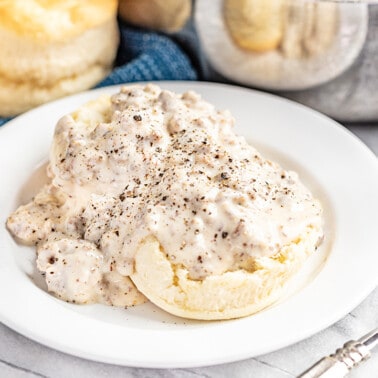
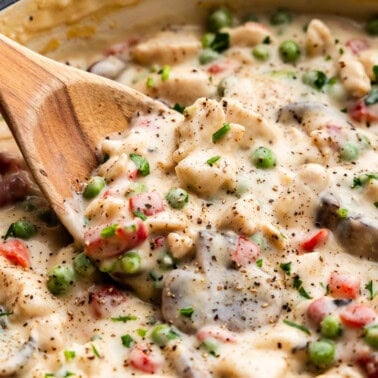
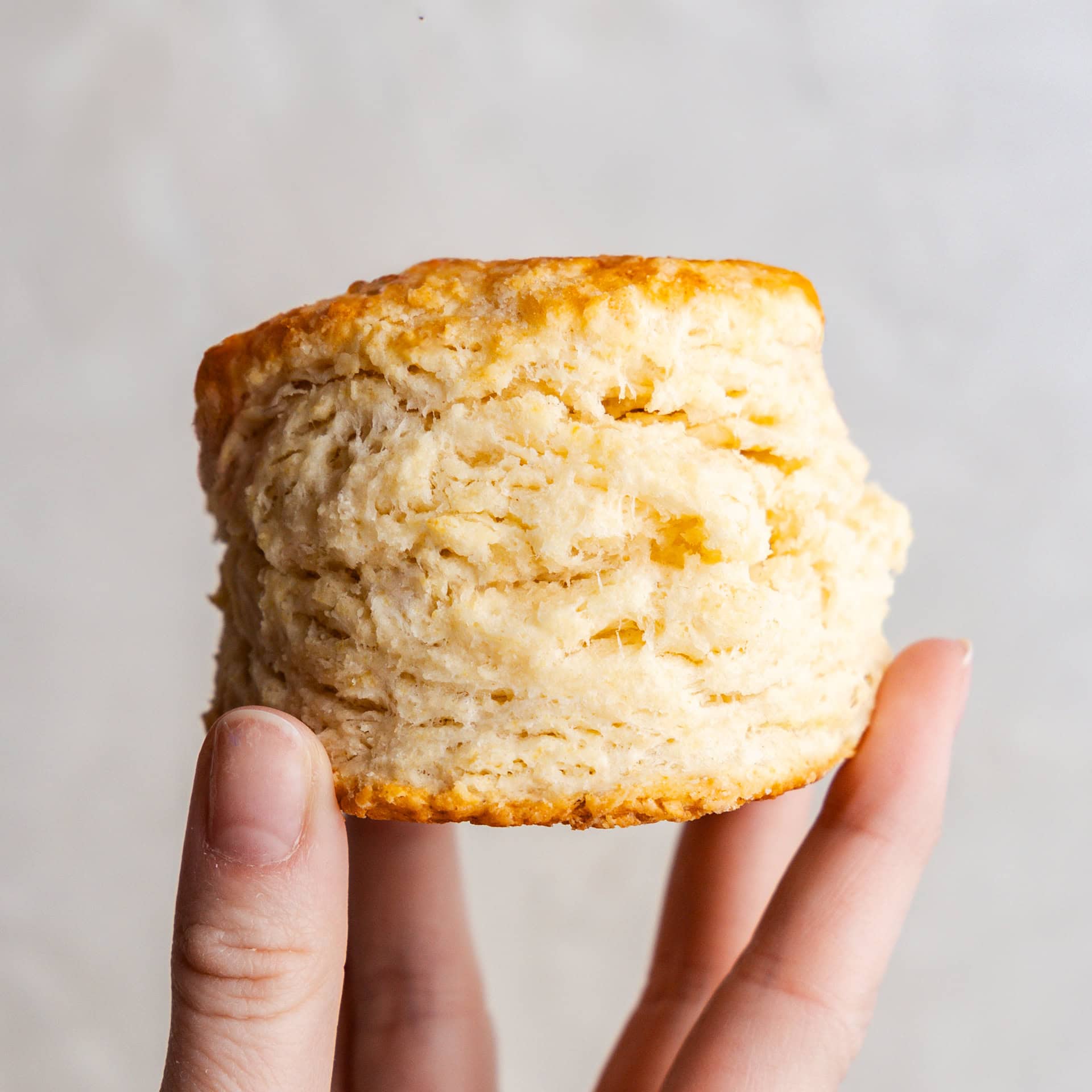
Can I use almond flour? Have to eat gluten free.
I haven’t tested the recipe with almond flour, but I have tested it with a one for one replacement. It’s not something I can recommend. Instead, I recommend using a recipe that’s specifically designed for the flour you want to use.
My family is dairy and gluten free. What can I use in place of butter
You can view the results of different fats above. Unfortunately, gluten free options are not ones I recommend, but rather use a recipe that’s specifically designed for the flour you want to use.
How much baking soda if using buttermilk ?
The recipe does not change if you are using buttermilk or milk.
Can i use self rising flour
Unfortunately, this recipe is not suitable for self rising flour without making significant adjustments. Self rising flour should only be used in recipes that specifically call for it.